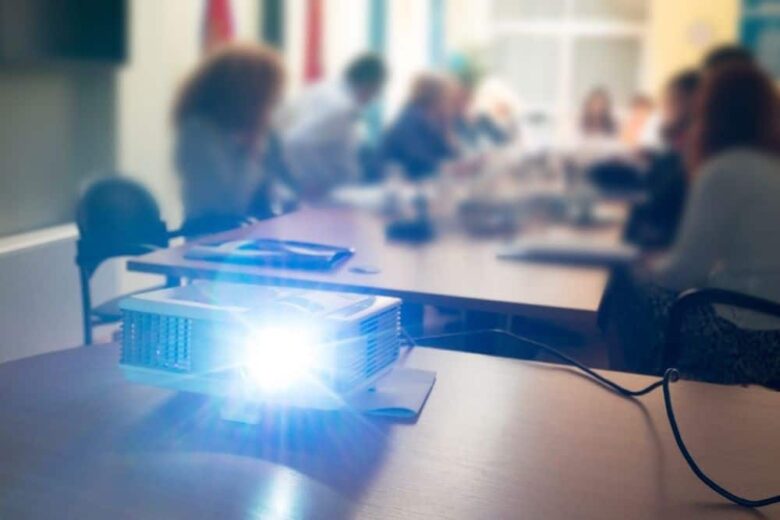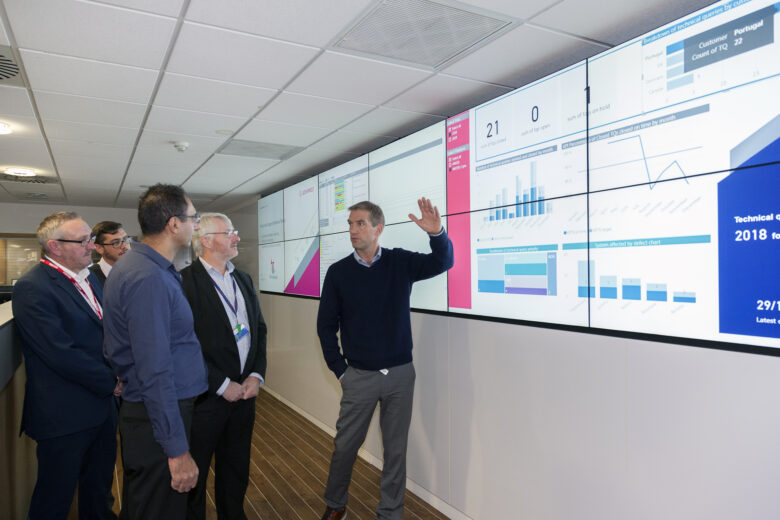Successful video presentations can have a significant impact on your business and AV progression, but how does having the right equipment impact our video presentation performance and what exactly do we need for a successful video presentation? If these make up some of your burning questions, then you’re in the right place.
At DEXON, we ensure that our customers have access to all the information they need for a successful presentation. So, that’s why we’ve compiled this guide to all things video presentation equipment.
In this article, we discuss exactly what you’ll need for a good video presentation, with a guide to why it’s important to have the exact right equipment and how a successful video presentation can benefit you and your business.
So, if you’re not an AV expert, don’t worry, because we’ve got you covered. Let’s go!
Why is it important to have the correct equipment for a video presentation?

Before we get into the list, it’s first important to express why exactly it’s crucial you have exactly the right equipment for your video presentation. Video presentations can be pretty complicated things, especially if you’re spearheading them by yourself.
When you have so many things to think of when delivering a presentation, it can be very easy to let something slip your mind before you start, which can then have a detrimental impact on the flow and function of your presentation.
In a nutshell, without the appropriate equipment, your presentation may not live up to its full potential.
Ensuring you have the right equipment for your presentation helps to support the flow of your work and can help you provide a high-quality display that engages your audience. For example, if you remember to bring additional microphones to your presentation, you ensure that in the event of a technical fault, you’ll still be able to keep your audience engaged with your message.
Having exactly the right equipment may also optimize the performance of your presentation. This means that your presentation may run a lot better if you consider the type of equipment it needs to function normally.
For example, if you have a large display that requires a significant amount of power, you may wish to bring additional generators to ensure that you can keep your presentation running. The same goes for the type of controlling equipment you choose for the event.
A video wall matrix controller, for example, may benefit a demanding presentation that requires reliability and sophisticated levels of control. Without it, your presentation may lag or cease to operate altogether.
How can successful video presentations benefit you?

Now you know why having the correct equipment is important for a successful video presentation, you may wonder how a successful presentation can benefit you and your business endeavours.
Well, as each business is different, the kinds of benefits that you can experience from an effective presentation may be different. However, there are some common impacts of a successful video presentation. Let’s go through some:
-
Engagement
Being able to hold your audience’s engagement is a powerful tool in business, and a clear way to do this for an increased period is by staging an effective presentation. Audiences can easily lose focus and direct their attention elsewhere if the presentation becomes boring, less interactive or loses its professional value with frequent pauses or errors.
With the correct equipment, you can stage a video presentation that grabs the audience and keeps their attention through the remainder of your set. This may then encourage them to find out more about you and your business which can have a significant positive impact on your earnings.
-
Helps you cater to a wider audience

Presentations are relatively universally accessible ways of communicating information. This is a huge strength that you should consider playing to because this can increase your customer base by a significant amount.
By providing an interactive and engaging video presentation experience, you may be able to reach a wider audience and bring more customers to your business.
-
Helps you get noticed faster
If you’re an AV professional or a business owner whose company hasn’t yet taken off, why not consider a video presentation to sell your business for you? With a video presentation, you can pre-prepare an exciting and engaging video that foregrounds the best part of your services.
This may encourage what is known as a ‘call to action.’ Call to action is when your customers feel motivated to look into your services and invest or buy a product by something you said. With a powerful video presentation, you may be able to give your customers the push that they need to invest in your products and services.
Equipment list for successful video presentations

Now that we have all the basics out of the way, let’s get onto what equipment you may need for a successful video presentation. To make things easier, we’ve made a checklist for you to follow when you’re next planning a presentation. With this checklist, we’ve compiled a small guide to each product, so you know why exactly you’ll need this. Here are six products you need for a video presentation:
1. HDMI, VGA and all other necessary cables
Unless you’re a completely wireless enthusiast, you’ll need HDMI and VGA cables to ensure that your computers, projectors and other presentation technology such as video walls and video wall controllers, work together. Depending on the type of technology and the ports you have, you may need different cables. Here is a guide to the type of cables you may need:
-
HDMI:

HDMI cables transport multimedia data from a HDMI compatible source onto the monitor of your choosing. This is definitely a cable you’ll need for more presentations as most modern-day laptops, computers and monitors will have a HDMI port included.
-
VGA:
A VGA cable essentially carries the visual analogue data from a CPU to a monitor, so if you’re working with a monitor that only has VGA ports, this is the cable you’ll need.
-
DVI:
A digital visual interface cable supports both digital and analogue signals. DVI ports are commonly present on older computers and most projectors, so this is a great piece of equipment to invest in.
-
Adaptor
While this isn’t a cable, this can be a useful bit of kit if you’re working with unfamiliar technology. In some cases, you may have to work with technology that doesn’t have a VGA or HDMI port, so an adaptor ensures that you can work with a multitude of different technologies without this impacting the quality of your display.
2. Microphone

If you’re delivering a virtual video presentation that requires no interaction with the audience, feel free to skip this step. However, if you’re video presenting at a conference and are required to interact in person with the audience in any way, then you should seriously consider investing in a set of microphones.
Unless you have the ability to project your voice for miles, you’ll need a microphone to simply engage with the audience, no matter how big the crowd is. Without a microphone, your audience engagement can take a huge hit. There are two kinds of microphones that you can choose from: wired or wireless.
Wireless microphones give you the freedom to walk around your presentation venue and interact with your audience, but this can increase the chances of cutting out interference from other devices.
Wired microphones can impact your freedom and leave you with fewer chances of interaction. However, wired is the best option if you’re in the market for reliability.
3. Projectors

Before splashing the cash on an expensive projector for your video presentation, ensure that you ask the venue whether they have a projector available. Most high-quality venues may have projectors built in which can save you a lot of time and money.
If not, ensure that you find a projector that facilitates high-quality images. The visual technology you choose for your project can make a big difference to how engaged and excited your audience are during your presentation.
4. Matrix
Do you need to switch seamlessly between sources during your video presentation? If the answer is yes, then you need to check out our range of matrix switchers! Matrix switchers allow users to display content from different input signals so it’s perfect for users who want to give their projects an extra edge, especially if you’re working with technology like video walls.
Our matrix switchers come with comprehensive guides that talk you through all specifications, configurations and application areas so you can invest with complete clarity!
5. Video wall controller

Video wall controllers are a must have if you’re working with, you guessed it, a video wall! Video wall controllers are a chassis capable of processing input and output signals. In doing this, users can control which images display on which monitors, allowing them to create a complex display with multiple layers of information.
This is the perfect tool if you want to create a dynamic display that efficiently conveys all the information your audience needs in a concise format.
6. Generators
Last but certainly not least, you may wish to bring additional power to your presentation. Large video projects may demand a large amount of power to run efficiently, especially if you have multiple systems working concurrently. To avoid any energy mishaps, a backup generator is a good way to ensure that there are no awkward cut outs or complete shut downs.
And that concludes our list. Of course, every presentation is different, so your list may look different than ours, but we hope this gives you a useful guide for your next presentation.


